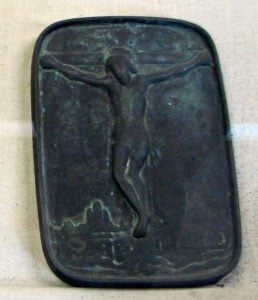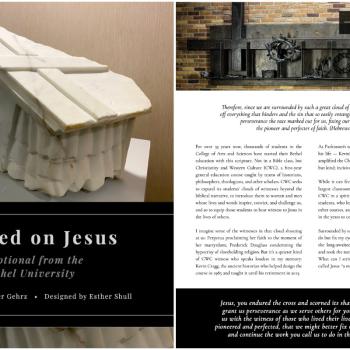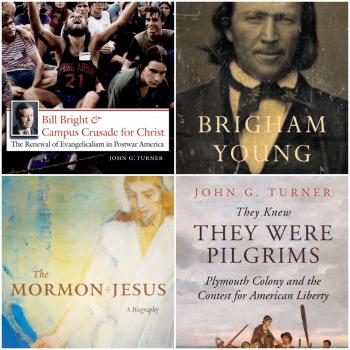Shusaku Endo’s Silence is a very grim novel, as is the much-discussed recent film adaptation by Martin Scorsese.
It is Japan, roughly 1639. After decades of fruitful missionary work begun by Francis Xavier in 1549, decades of bitter persecution have followed. There are still many Christians in Japan, but they are hidden. Some Portuguese Jesuits have lost their lives, and one — Father Cristóvão Ferreira — has apostatized.
Jesuit missionaries Sebastian Rodrigues and Francisco Garrpe go to Japan in part to minister to those hidden Christians and also to discover the truth of what has happened to their mentor Ferreira.
Rodrigues and Garrpe experience first the joy of ministering to people who have long been without access to priests and most sacraments. Then the inquisitor learns that there are Christians in the village above which they are hiding. Rodrigues and Garrpe watch the executions of several men to whom they have ministered. They flee before the inquisitor murders more of their flock.
Rodrigues is betrayed by a man named Kichijiro who has already apostatized twice in order to save his life. Throughout the novel, Rodrigues compares Kichijiro to Judas. Rodrigues wrestles with the relationship between Jesus and Judas. The Son of God loved everyone, including the one who betrayed him. “True love,” Rodrigues reflects, “was to accept humanity when wasted like rags and tatters.” Still, until the novel’s end Rodrigues cannot bring himself to forgive Kichijiro.
 Rodrigues fully expects to imitate his savior in death. In the end, though, he renounces his faith by ceremonially stepping on a fumi-e, an image of his Lord. He does so to save Christians who would otherwise be executed. “The priest placed his foot on the fumie,” Endo narrates. “Dawn broke. And far in the distance the cock crew.”
Rodrigues fully expects to imitate his savior in death. In the end, though, he renounces his faith by ceremonially stepping on a fumi-e, an image of his Lord. He does so to save Christians who would otherwise be executed. “The priest placed his foot on the fumie,” Endo narrates. “Dawn broke. And far in the distance the cock crew.”
Unlike Judas, moreover, Kichijiro does not die in despair. Instead, he comes to Rodrigues. The padre is no longer a padre. His inquisitor has renamed Rodrigues. A man named Okada San-emon has died. Rodrigues must assume his name and his wife. Kichijiro comes to him and asks the former priest (known locally as “Apostate Paul”) to hear his confession. After some hesitation, Rodrigues assents to the request. “He loved him now in a different way from before,” Endo informs. “Everything that had taken place until now had been necessary to bring him to this love.”
In Silence, Endo’s rather terse narration powerfully captures Rodrigues’s growing anguish and despair. Its enduring appeal also rests on its basic theological question: Is God silent in the face of human suffering? “Why has Deus Sama [God] imposed this suffering on us,” Kichijiro asks Rodrigues and Garrpe. After years of persecution, Rodrigues reflects, “and in the face of this terrible and merciless sacrifice offered up to Him, God has remained silent.”
Endo does not try to provide a tidy answer to this or related questions. One irony in Silence, though, is that Christ is not absent or silent. Rodrigues repeatedly sees the face of Christ, or, more accurately, faces of Christ. Early in the novel, he sees a “face filled with vigor and strength.” By the end, he sees a face “sunken and utterly exhausted.” When Rodrigues is brought before the fumie, Christ speaks to him: “Trample! Trample! … It was to be trampled on by men that I was born into this world. It was to share men’s pain that I carried my cross.”
Rodrigues does not imitate Christ in martyrdom. He does, however, imitate his Lord in his obedience in the midst of anguish. He obeys Christ’s command to trample. Rodrigues would have died for his faith. He apostatizes to save others. As Christ “emptied himself” of his true identity and “became obedient to the point of death,” so Rodrigues empties himself of his true identity and assumes the form of a Buddhist scholar.
Martin Scorsese’s film is a very faithful adaptation of Endo’s novel, but it ends on a rather different note. The novel offers suggestions that Rodrigues retained his faith despite his public apostasy, but it leaves that issue unresolved. When Rodrigues or Okada San’emon finally dies, his corpse is cremated and buried in a Buddhist temple. Endo closes his novel with a bureaucratic note about San’emon’s funeral expenses.
In the film, we see that San’emon’s wife has pressed into his dead hand a crucifix he had received many decades earlier from the hidden Christians to whom he ministered. Thus, we know that Rodrigues has retained this image of Christ and, presumably, retained his faith.
Scorsese’s ending works. After all, it was Rodrigues’s savior who ordered him to trample. After his apostasy, he reflects on his love for his Lord while receiving Kichijiro’s confession. The novel strongly suggests that Kichijiro retained his own faith
Still, I like the ambiguity of Endo’s ending. It leaves Rodrigues’s self-emptying act of sacrifice complete. He has to give up everything to serve his Lord, including any sign of his old identity as a priest. Endo refuses to provide easy answers to the theological questions that accompany suffering, persecution, and apostasy.













